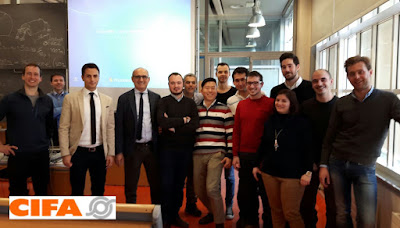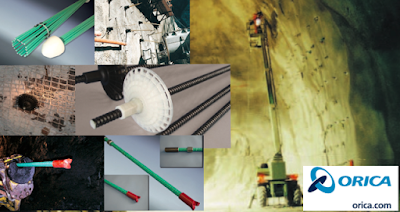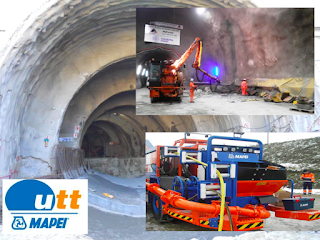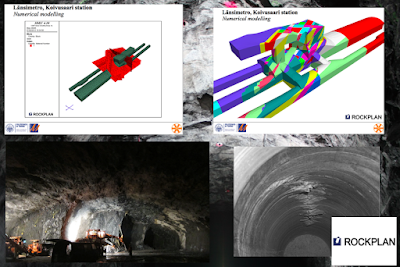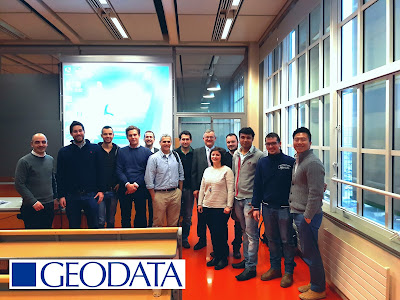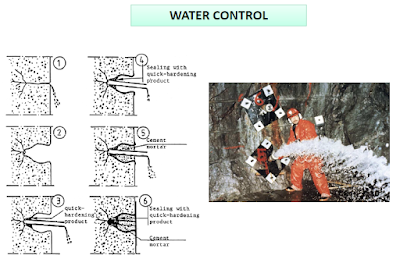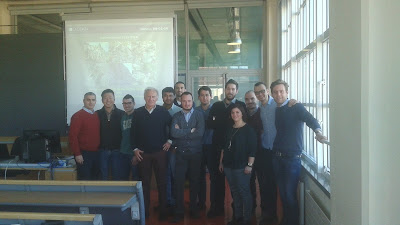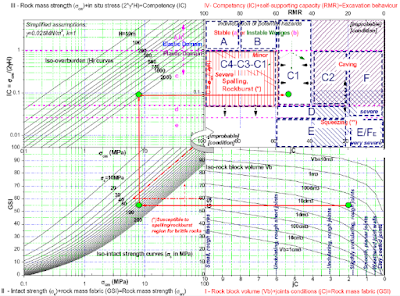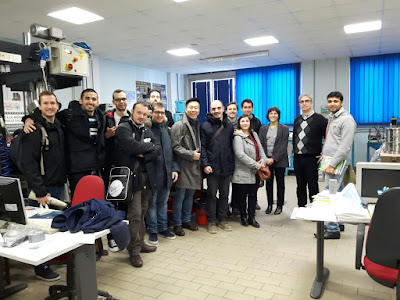We have reached the sixth week in Tunnel and Tunnelling Boring Machines Master Course.
This week was dedicated to some tools for tunnelling excavation as Formworks, Rock Drilling tools and Mechanical Cutting equipments.
Specialised crew from CIFA (Underground Concrete Machineries) gave a complete overview of their available technology for Formworks. Eugenio Bertino introduced precast segments moulds and the different plant layouts for the production system depending on the project requirements. Later on, Giovanni Esposito completed the topic speaking about Cast in-situ formworks, explaining the principles of self supporting and self reacting technologies, emphasising on the details for a proper application at the job site.
Another company that presented his technology this week was SANDVIK (Mining and Construction Tools), particularly they exposed Rock Drilling Tools and Roadheader equipments.
Juha Kukkonen dedicated a complete day to Rock Drilling machines and tools produced for tunnelling and mining applications. Jumbos for D&B excavation, Bolting units and Extension Drilling equipments were treated in detail, analysing the control systems of the machine that ensure the best possible results in terms of production and final product.
 |
| Juha Kukkonen from SANDVIK and Students after Rock Drilling Machines lecture. |
Thomas Peinsitt presented the whole catalog of available products for Mechanical Cutting equipment, focusing mainly on Roadheaders. He went through its mechanical features, cutting sequence, cuttability parameters, wear phenomena and finally safety and ventilation aspects. Thomas shown the potential of this rarely applied technique through many case studies.
 |
| Thomas Peinsitt (SANDVIK) lecture on Mechanical Cutting and Roadheaders. |
To conclude this week Director of the course Prof. Daniele Peila held a very interesting lecture on soft ground improvement techniques as forepoling, face reinforcement, drainage and jet grouting, describing deeply their particular features and design procedures. Great part of the lecture was reserved to case studies from his professional experience in order to understand the wide range of possibilities available to enhance the properties of the material to be excavated and guarantee safe and stable working conditions.
 |
| Professor Peila lecture on Ground Improvement. |

